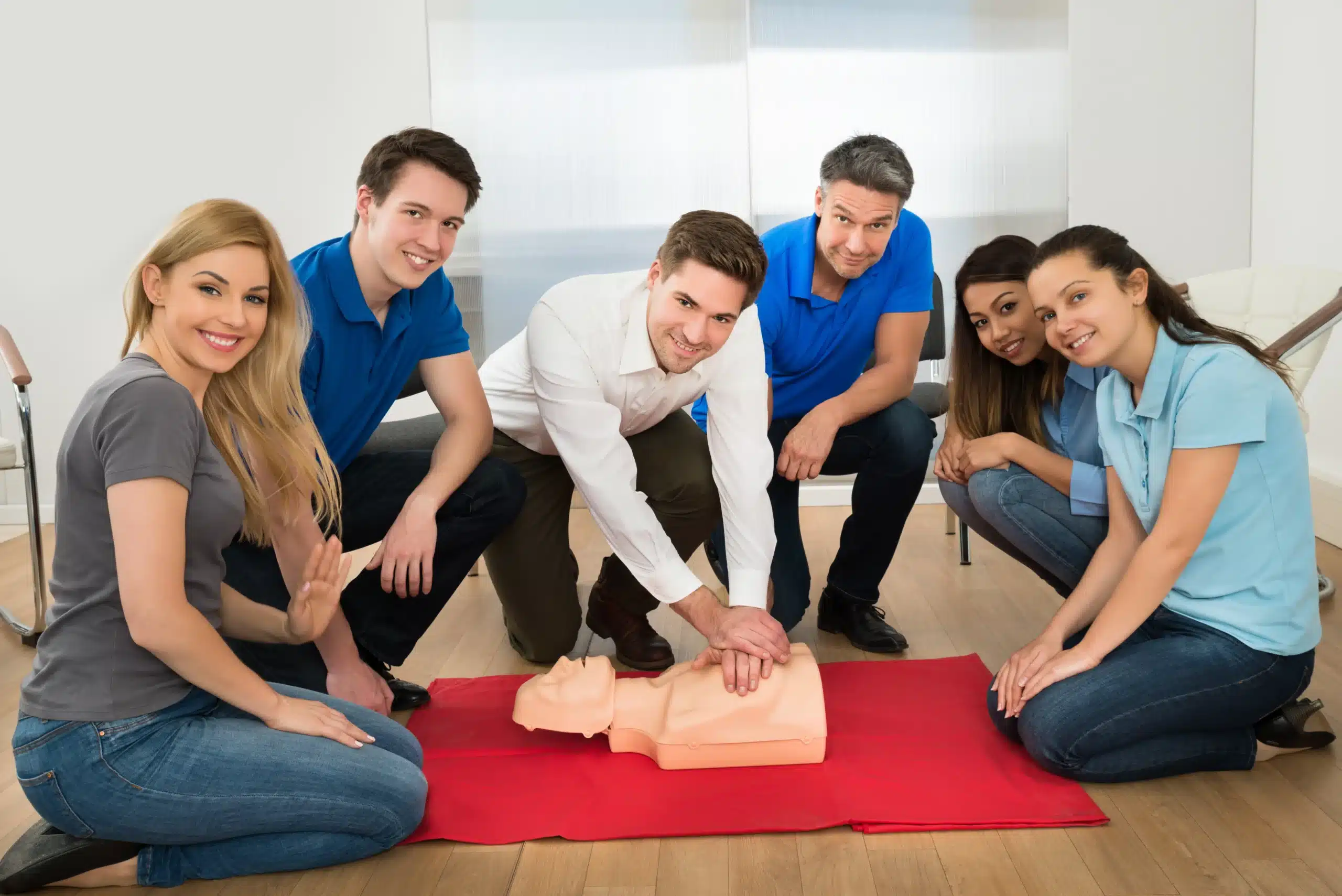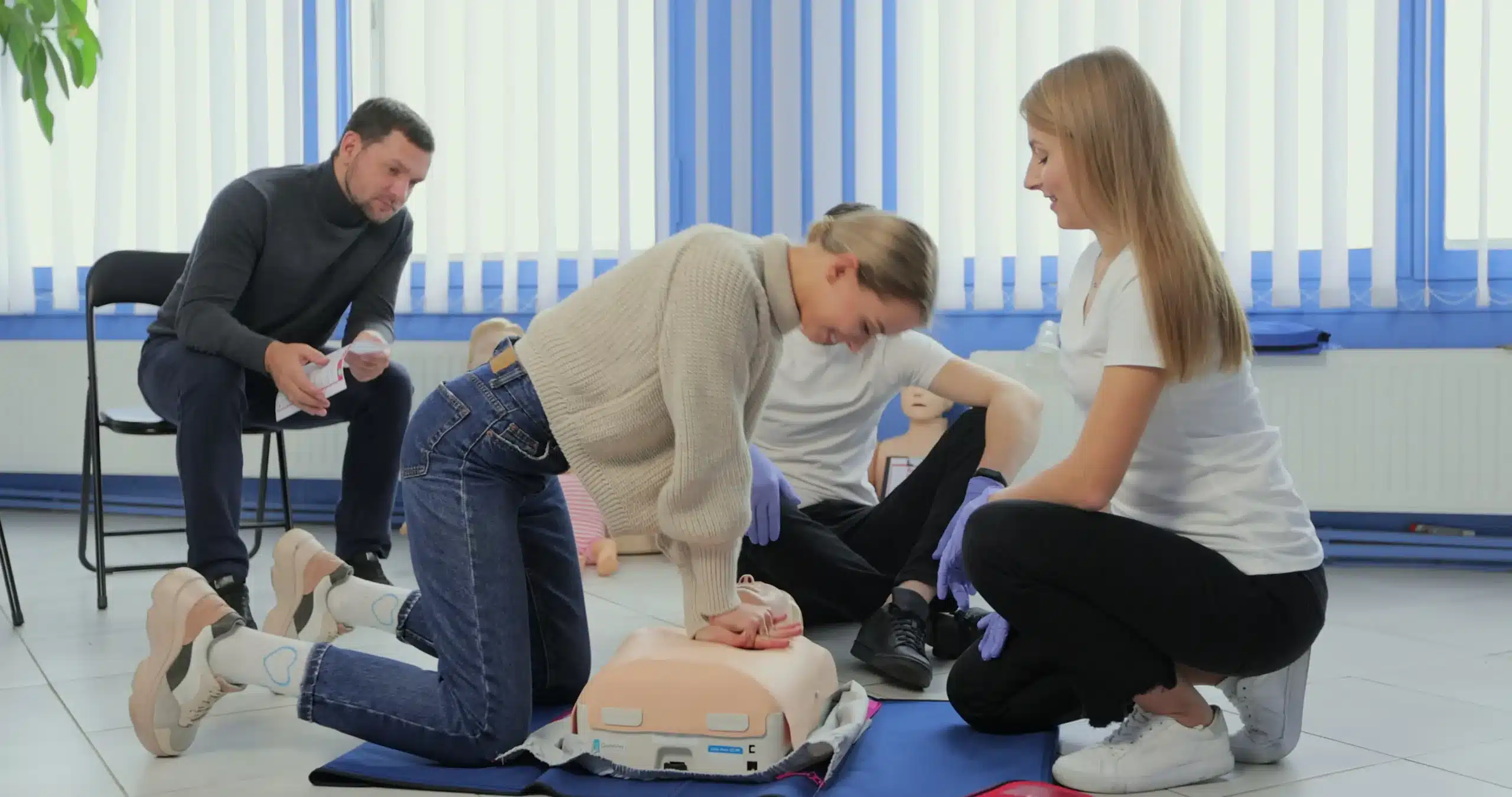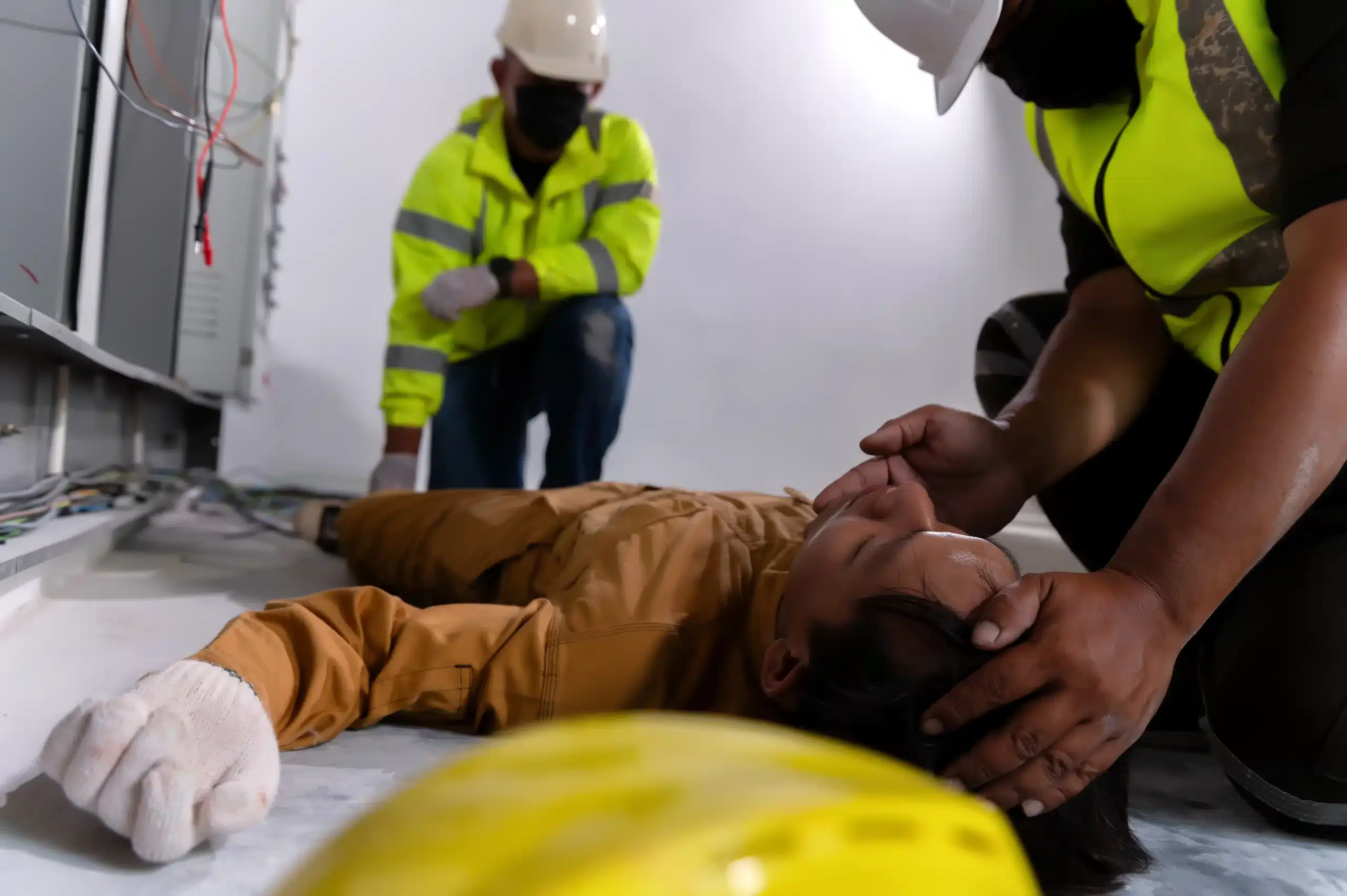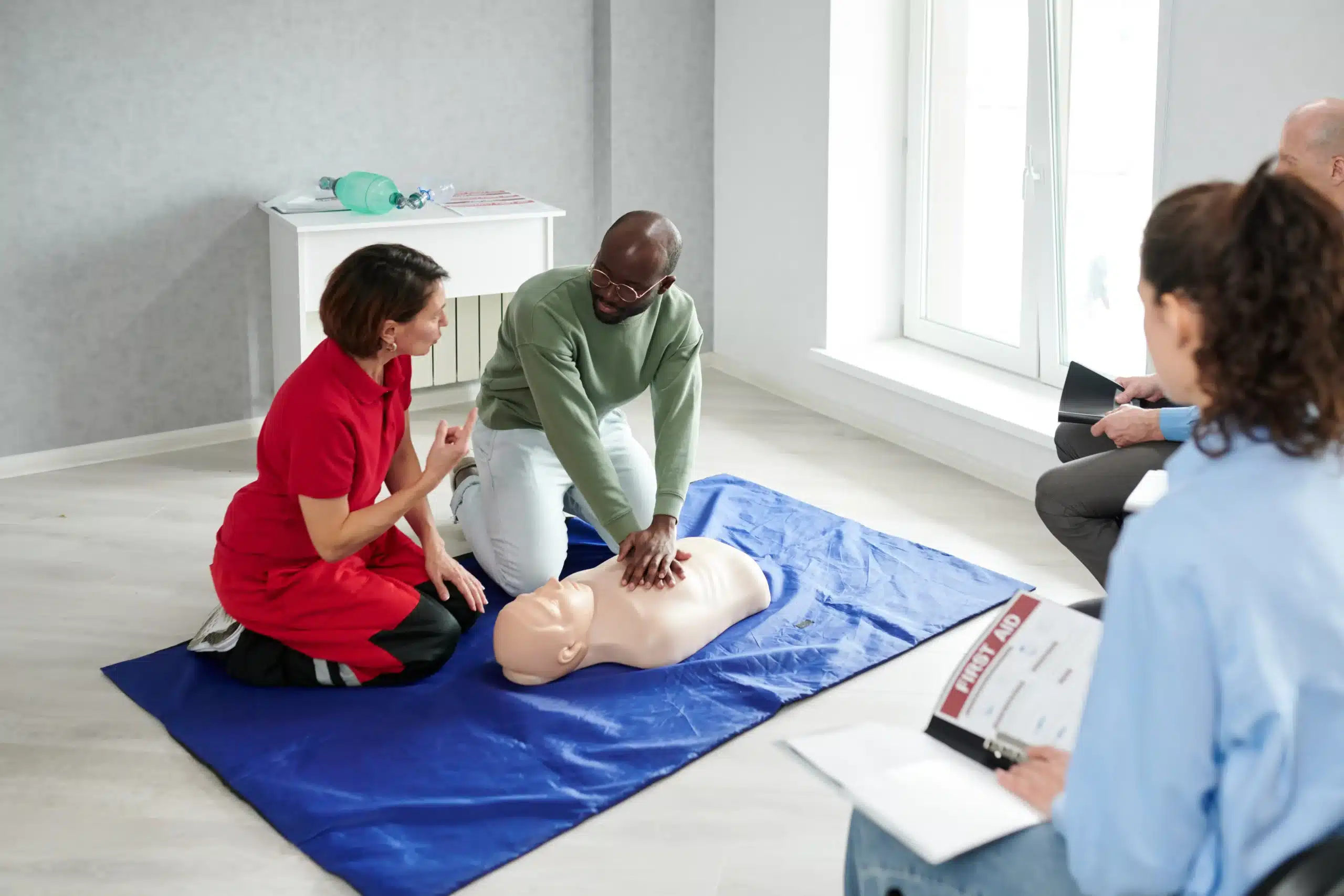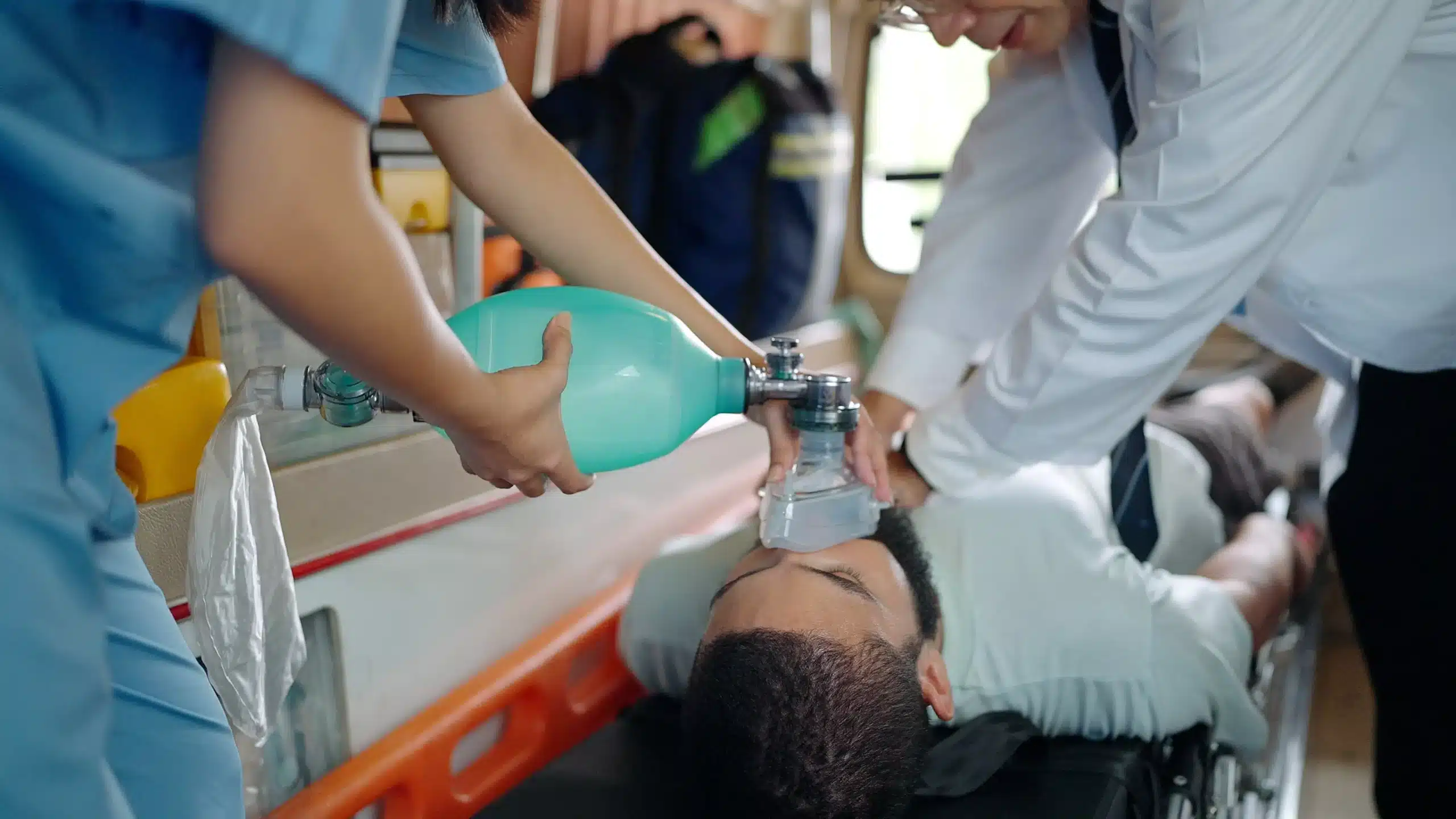Life is full of unexpected events, and being prepared for medical emergencies is a valuable skill everyone should consider. First-aid training equips you with the knowledge and confidence to respond effectively in various situations, from minor injuries to life-threatening events. If you’ve been searching for “first-aid classes near me,” this article will guide you through the process of finding the right training. We’ll explore different course options, certification requirements, and the benefits of first-aid training for both personal and professional growth. Let’s get started and empower you to become a more prepared and confident individual.
Key Takeaways
- First aid is an essential life skill: Equipping yourself with first-aid knowledge empowers you to confidently handle medical emergencies, big or small, at home, in the workplace, or within your community. Find a course that aligns with your specific needs and learning preferences.
- Choose the right training format: From traditional in-person classes to flexible online options and blended learning, select the format that best suits your schedule and learning style. Hands-on practice is crucial for developing essential skills, so consider this when making your choice.
- Maintain your certification: First-aid certifications typically expire after two years. Stay up-to-date with the latest guidelines and techniques by taking renewal courses and practicing your skills regularly. This ensures you’re always prepared to provide effective assistance in an emergency.
What are First-Aid Classes?
First-aid classes equip you with the skills to handle medical emergencies, from minor cuts to life-threatening situations. Different levels of training cater to various needs, from basic knowledge for everyday life to advanced skills for healthcare professionals. Let’s explore the different types of first-aid classes available.
Basic First Aid
Basic first-aid courses cover essential skills for responding to common injuries and illnesses. You’ll learn how to treat minor wounds, sprains, burns, and allergic reactions. These classes also teach you how to recognize and respond to more serious situations, such as choking, heart attacks, and strokes. Basic first aid training gives you the confidence to act quickly and provide initial care until professional help arrives. For basic first aid training, check out the courses offered by the American Red Cross.
CPR and AED Training
CPR and AED training teaches you how to perform cardiopulmonary resuscitation (CPR) and use an automated external defibrillator (AED). CPR is a life-saving technique used when someone’s heart stops beating. AEDs are portable devices that can deliver an electric shock to the heart to restore a normal rhythm. This training is crucial for anyone who might encounter a cardiac arrest emergency, including parents, teachers, coaches, and workplace responders. Safety Training Seminars offers CPR and AED certification classes.
Advanced First Aid
Advanced first-aid training builds upon the basics, providing more in-depth knowledge and skills for managing complex medical emergencies. This level of training is often required for healthcare providers, wilderness guides, and other professionals who may encounter situations beyond the scope of basic first aid. Advanced courses cover topics such as wound management, fracture stabilization, and administering medications. The National Safety Council offers resources for advanced first-aid training.
Specialized First-Aid Courses
Specialized first-aid courses focus on specific skills and situations. For example, “Stop the Bleed” training teaches you how to control severe bleeding, a skill that can be critical in traumatic injuries. Wilderness first aid focuses on managing injuries in remote locations where access to medical care may be delayed. Other specialized courses address topics such as pediatric first aid, pet first aid, and oxygen administration. Learn more about specialized training options from providers like Safety First Training.
Find First-Aid Classes Near You
So, you’re ready to learn first aid? Great! Finding the right class is easier than you think. Here’s how to find first-aid classes near you:
Research Local Providers
Start by researching providers in your area. A quick online search for “first aid classes near me” is a good starting point. Look for established organizations like the American Red Cross or the National Safety Council. Many hospitals and community centers also offer first-aid training. Consider checking out local businesses like Safety Training Seminars if you’re in the Oakland area. They often provide a range of courses, including first aid and CPR. Don’t forget to explore options at nearby universities or colleges; they sometimes offer community courses.
Verify Instructor Credentials
Before signing up, do a little digging on the instructors. Look for certifications from reputable organizations like the American Heart Association or the American Red Cross. Confirming the instructors’ credentials ensures you’re learning from qualified professionals. You can often find this information on the training provider’s website. A site like eCPRVerify can also help you confirm certifications.
Read Reviews
Reading reviews from past students can give you valuable insights. Look for comments about the instructors’ teaching style, the course content, and the overall learning experience. Reviews can help you choose a class that fits your learning style and needs. Check online review platforms like Yelp or Google Reviews, or look for testimonials directly on the training provider’s site.
How Much Does First-Aid Training Cost?
Deciding to invest in first-aid training is a smart move, but understanding the costs involved is important. Let’s break down the typical price ranges, factors that influence cost, and potential discounts.
Typical Price Ranges
First-aid training costs vary based on several factors, including the course type, location, and provider. Basic first-aid and CPR certification courses often range from $75 to $150. More comprehensive training, such as becoming a certified instructor, can cost around $400, sometimes including program materials like those offered by HSI. Remember, this is an investment in valuable, potentially life-saving skills. CPR Classes Oakland offers a low price guarantee to ensure you receive quality training at a competitive price.
Factors Influencing Costs
Several factors contribute to the overall cost of first-aid training. The level of instruction, course materials, instructor qualifications, and the format (online versus in-person) all play a role. While cost is a factor, remember that comprehensive training from qualified instructors is crucial for effective emergency response. Investing in thorough training can also lead to long-term cost savings for employers by reducing workplace accidents and the need for extensive medical treatment, as highlighted by Abacus International. Proper first-aid protocol can significantly improve workplace safety and minimize injuries, as explained by OnSite Health. Consider these factors when choosing your course to ensure you receive the best value for your investment.
Discounts and Promotions
Look for potential discounts and promotions to make your first-aid training more affordable. Many providers, including the Red Cross, offer discounts for group bookings. CPR Classes Oakland also provides discounts for group classes, making it a cost-effective choice for businesses and organizations. Keep an eye out for seasonal promotions or bundled packages that combine first-aid training with CPR or AED certification. The Red Cross also offers various training options, from first aid and CPR to lifeguarding and water safety. Exploring these options can help you find the right training at the right price.
First-Aid Class Formats and Time Commitment
Finding the right first-aid class often depends on your schedule and learning style. Luckily, several different class formats are available to suit your needs. Let’s explore the most common options: in-person, online, and blended learning.
In-Person Training
Traditional in-person first-aid classes offer a hands-on learning experience. These classes provide direct interaction with instructors and classmates, allowing for real-time feedback and practice. In-person training is ideal for those who thrive in a structured classroom setting and prefer face-to-face instruction. This format also allows you to ask questions and clarify concepts immediately. For example, the American Red Cross offers a variety of in-person first-aid and CPR courses.
Online Courses
For those with busy schedules or limited access to in-person classes, online first-aid courses offer a flexible alternative. Online learning allows you to complete the coursework at your own pace, anytime and anywhere. This format often involves interactive modules, videos, and quizzes to reinforce your learning. However, remember that online-only courses typically don’t include the hands-on skills practice necessary for certification. The Red Cross also offers online first aid training as an alternative to in-person learning.
Blended Learning
Blended learning combines the best of both worlds. This format typically involves completing an online portion covering theoretical concepts, followed by an in-person skills session. The University of Nebraska Omaha, for example, offers blended learning CPR/AED/First Aid classes. This approach provides the flexibility of online learning with the essential hands-on practice required for certification.
Class Duration
The time commitment for first-aid training varies depending on the format and specific course content. Online courses can often be completed in a few hours, while in-person classes may require a full day. Blended learning courses typically involve a shorter in-person session after completing online modules. Some blended learning courses require approximately three hours and 50 minutes of online coursework and an additional two hours and 30 minutes for the in-person skills session. When choosing a class, consider the total time commitment, including both online and in-person components.
What to Expect in Your First-Aid Training
So you’ve signed up for a first-aid class—congratulations! Knowing what to expect can help you feel prepared and ready to learn. Here’s a quick rundown of what your training will likely involve:
Course Content
First-aid courses cover a wide range of essential life-saving skills. You’ll learn how to assess and respond to various medical emergencies, from minor cuts and scrapes to more serious situations like choking, allergic reactions, and sudden cardiac arrest. Expect to cover topics like recognizing the signs of a heart attack or stroke, controlling bleeding, and administering CPR. Many courses, like those offered by the American Red Cross, also include training on how to handle environmental emergencies like heatstroke and hypothermia. You’ll gain the confidence to respond effectively in various situations.
Hands-On Practice
Learning first aid isn’t just about memorizing facts—it’s about developing practical skills you can use confidently in a real emergency. Most reputable courses, including those offered by Safety Training Seminars, incorporate hands-on practice sessions. You’ll have the opportunity to practice techniques like bandaging wounds, splinting fractures, and performing CPR on mannequins. This hands-on experience is crucial for building muscle memory and ensuring you can effectively apply what you’ve learned under pressure. The National Safety Council emphasizes the importance of this practical component in their training programs. This practice transforms knowledge into action, preparing you for real-world scenarios.
Assessment and Certification
Most first-aid courses conclude with an assessment to ensure you’ve grasped the key concepts and can perform the necessary skills. This often involves a written exam and a practical skills test where you demonstrate your abilities in front of a certified instructor. After successfully completing the course, you’ll receive certification, typically valid for two years. Organizations like the American Red Cross offer renewal courses to help you stay up-to-date on the latest first-aid practices and maintain your certification. Remember, staying current with your training is essential for providing effective assistance in emergencies. This ongoing learning ensures your skills remain sharp and relevant.
How Long is First-Aid Certification Valid?
Knowing the validity of your first-aid certification is key to ensuring your skills are current. Let’s break down how long these certifications typically last, how to renew, and tips for staying prepared.
Certification Periods
Most first-aid certifications are valid for two years. This timeframe reflects the ongoing evolution of best practices and the need to refresh your knowledge regularly. After two years, you’ll need to renew your certification to stay up-to-date on the latest techniques and guidelines. This ensures you can respond effectively and confidently in an emergency. For specific details on certification periods, check with your certifying organization, such as the American Red Cross. They offer a range of resources and information to help you stay informed.
Renew Your Certification
The good news is that renewing your first-aid certification is usually a straightforward process. Renewal courses are generally shorter than the initial certification course, focusing on key updates and changes to established procedures. This streamlined approach allows you to quickly refresh your skills without repeating the entire curriculum. Many organizations offer convenient online renewal options, making it easy to fit into your schedule. Check with your original certifying organization for specific renewal requirements. They can guide you through the process and answer any questions.
Keep Your Skills Sharp
Even with a valid certification, regular practice is crucial for maintaining proficiency in first-aid. The Red Cross recommends refresher courses or practice sessions every few months to keep your skills sharp. This consistent review can make a significant difference in your ability to recall and apply essential techniques under pressure. Consider joining a local group or practicing with friends or family to reinforce your knowledge and build confidence. You can also find helpful resources and practice scenarios online to supplement your training. Staying actively engaged with first-aid practices will ensure you’re always ready to help.
Choose the Right First-Aid Class
Personal vs. Professional Needs
When selecting a first-aid class, think about whether you need it for personal use or professional reasons. Are you a parent wanting to be prepared for household emergencies? Or are you a healthcare worker needing certification for your job? For personal needs, a general first-aid and CPR class like those offered by the American Red Cross might be perfect. They cover essential skills for adults, children, and infants and offer various learning formats. If you need professional certification, make sure the course aligns with workplace requirements and standards like those offered by Safety Training Seminars. We offer certifications in BLS, ACLS, PALS, and more.
Industry-Specific Training
Some industries require specialized first-aid training. For example, childcare providers, teachers, and coaches often need specific certifications. Safety Training Seminars offers group discounts and courses tailored to various professions, ensuring you get the relevant training for your field. Organizations like the National Safety Council also provide expert-level workplace first-aid and CPR training, keeping their guidelines updated with the latest medical research. If you need a nationally accepted certification, the American Safety Training Institute offers various courses, including CPR, AED, and first aid, with flexible online, on-site, and blended learning options. Make sure to research your industry’s specific requirements to choose the right course.
First-Aid Training Providers in Oakland
Finding the right first-aid training can feel overwhelming, but plenty of reputable organizations offer classes. Here are a few options to explore in Oakland:
Safety Training Seminars
Safety Training Seminars offers a range of courses based on American Heart Association, Health & Safety Institute, and American Safety Health Institute standards. They focus on CPR, AED, and first-aid training, with classes designed to meet industry requirements for various professions, including childcare providers, teachers, and construction workers. Check out their CPR and first-aid certifications.
American Red Cross
The American Red Cross is a well-known provider of first-aid training. They offer various learning formats—in-person, online, and blended learning—to suit different schedules and preferences. Their first-aid classes cover essential skills for handling emergencies, from minor injuries to more serious situations like choking or head injuries. They also offer training in adult, child, and infant first aid.
American Heart Association
While known primarily for CPR training, the American Heart Association also provides first-aid training through their eLearning and blended learning platforms. This allows for flexible learning options and provides instructors with tools to verify student completion certificates. If you’re looking for online convenience combined with reputable certification, this might be a good fit.
National Safety Council
The National Safety Council focuses on workplace safety and offers first-aid and CPR training courses designed for various professional settings. Their training emphasizes practical skills and knowledge to respond effectively to medical emergencies in the workplace.
Local Hospitals
Local hospitals in Oakland frequently offer first-aid training and certification courses to the community. These courses equip individuals with essential life-saving skills and may also offer specialized training tailored to specific community needs. Check with hospitals in your area for their course schedules and offerings.
Why is First-Aid Training Important?
Knowing first aid can make a real difference in critical situations. It empowers you to act quickly and confidently when someone is injured or becomes ill, potentially saving lives and minimizing harm. Whether at home, in the workplace, or out in the community, first-aid training equips you with essential skills to respond effectively in emergencies.
Personal Preparedness
First-aid training provides you with the skills to handle everyday mishaps and more serious medical emergencies. From minor cuts and burns to sudden illnesses and injuries, you’ll be prepared to offer immediate assistance to family members, friends, and even strangers. First-aid training can truly rescue lives, and the confidence it gives you can be invaluable. Knowing you can handle a medical emergency until professional help arrives can bring peace of mind to you and your loved ones. This personal preparedness can make your home a safer place and allow you to enjoy activities with greater confidence.
Workplace Safety
First-aid training is crucial for creating a safer work environment. Proper first-aid protocol increases workplace safety awareness, leading to fewer injuries and accidents. Trained employees can administer immediate care, minimizing the severity of injuries and preventing complications. This rapid response can also reduce the need for more extensive and expensive medical treatment, lowering insurance claims and workers’ compensation costs. A safer workplace benefits everyone, from employees to employers. Plus, having trained first-aiders on-site can boost team morale, knowing that colleagues are prepared to handle emergencies. This also reduces stress for employees knowing they have the skills to handle an emergency.
Community Resilience
First-aid training strengthens the overall resilience of a community. When more people are trained in first aid, the community is better equipped to respond to emergencies of all types. Trained individuals can provide immediate assistance during natural disasters, accidents, or other unforeseen events, potentially bridging the gap until professional help arrives. This widespread knowledge of first aid can create a sense of security and preparedness within the community, fostering a culture of support and mutual aid. By investing in first-aid training, communities can empower their members to be active and responsible participants in ensuring the safety and well-being of everyone.
Related Articles
- Your Guide to First Aid Training in Oakland – Oakland CPR Classes
- Pediatric First Aid & CPR: Your Ultimate Guide – Oakland CPR Classes
- CPR Classes in Alameda: Your Complete Guide – Oakland CPR Classes
- Find CPR Classes Near Me: A Complete Guide – Oakland CPR Classes
- Advanced Cardiac Life Support in Oakland: Find the Right Course – Oakland CPR Classes
Frequently Asked Questions
What’s the difference between basic and advanced first aid? Basic first aid covers common injuries like cuts, burns, and sprains, giving you the skills to manage the situation until professional help arrives. Advanced first aid goes deeper, covering more complex situations and often involves additional training in areas like administering medications or stabilizing fractures. It’s often required for specific professions like healthcare providers or wilderness guides.
How can I find first-aid classes near me? Start with a simple online search! Look for established organizations like the American Red Cross or the National Safety Council. Also, check local community centers, hospitals, and even universities—they often offer first-aid courses. Don’t forget to check reviews and verify instructor credentials before signing up.
Are online first-aid courses as good as in-person classes? Online courses offer flexibility, letting you learn at your own pace. They’re great for refreshing your knowledge or learning the basics. However, they often lack the hands-on practice crucial for proper certification. For certification, look for blended learning options that combine online learning with in-person skills sessions, or opt for a fully in-person class.
How much should I expect to pay for first-aid training? Costs vary depending on the course type, location, and provider. Basic first-aid and CPR classes typically range from $75 to $150. More advanced or specialized training can be more expensive. Look for providers like Safety Training Seminars who offer a low-price guarantee or discounts for group classes.
How long is my first-aid certification good for, and how do I renew it? Most first-aid certifications are valid for two years. To renew, you’ll typically take a shorter refresher course covering any updates to procedures or guidelines. Check with your certifying organization for specific renewal requirements. Even with a valid certification, regular practice is essential to keep your skills sharp.


